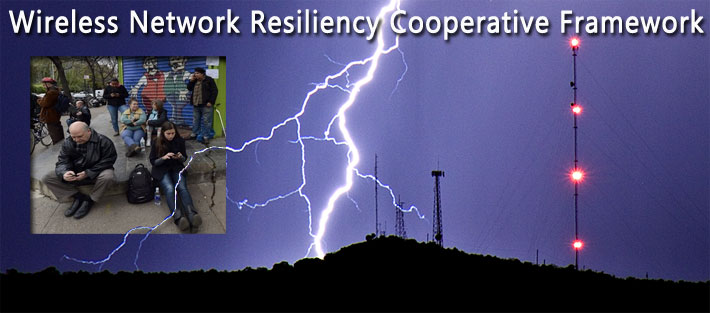
After Hurricane Sandy in 2013, New York City residents couldn’t get reception after the storm knocked out numerous cell towers. The Wireless Network Resiliency Cooperative Framework is designed to improve networks during and after a storm or catastrophe.
Carriers today said they’re in agreement on how to facilitate information-sharing in an effort to improve network resiliency before, during and after natural disasters and emergencies.
House Energy and Commerce Committee ranking member Frank Pallone and CTIA the Wireless Association released the “Wireless Network Resiliency Cooperative Framework” with the backing of AT&T Inc., Sprint Corp., T-Mobile, U.S. Cellular and Verizon Communications.
CTIA said that the framework is the result of five months of negotiations with FCC Chairman Tom Wheeler that began after Pallone introduced H.R. 3998, which would require the FCC to begin proceedings to develop roaming agreements between mobile service providers to allow for mobile service at reasonable rates during emergencies and provide service for no charge during emergencies to or from 911 services.
The framework contains five key points to enhance coordination:
(1) Providing for reasonable roaming under disasters arrangements when technically feasible;
(2) Fostering mutual aid during emergencies;
(3) Enhancing municipal preparedness and restoration;
(4) Increasing consumer readiness and preparation; and
(5) Improving public awareness and stakeholder communications on service and restoration status.
“This agreement will save lives during major emergencies like Superstorm Sandy,” said Pallone. “I commend CTIA and the FCC for working with me to craft a comprehensive agreement that ensures consumers have access to wireless service during an emergency even if their wireless network goes down.”
“I am pleased that CTIA and the wireless providers created a set of common-sense solutions to improve coordination and network recovery during disasters and emergencies. This Framework will benefit consumers and help limit the impact of future disasters, while avoiding unworkable and unnecessary mandates,” said CTIA President and CEO Meredith Attwell Baker. “I also commend Representative Pallone and Chairman Wheeler for their leadership, which will help keep Americans safe and connected during the next storm.”
During and after Superstorm Sandy there was a major breakdown of telecommunications networks, including cellular and home telephones, television and internet services. This created a dangerous barrier to emergency response and recovery for residents and towns.















